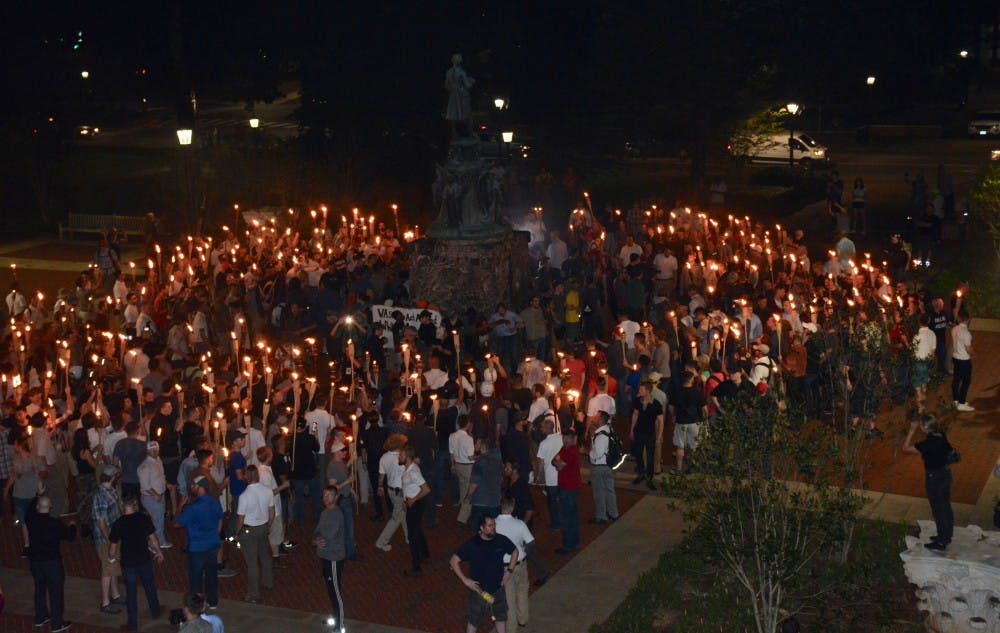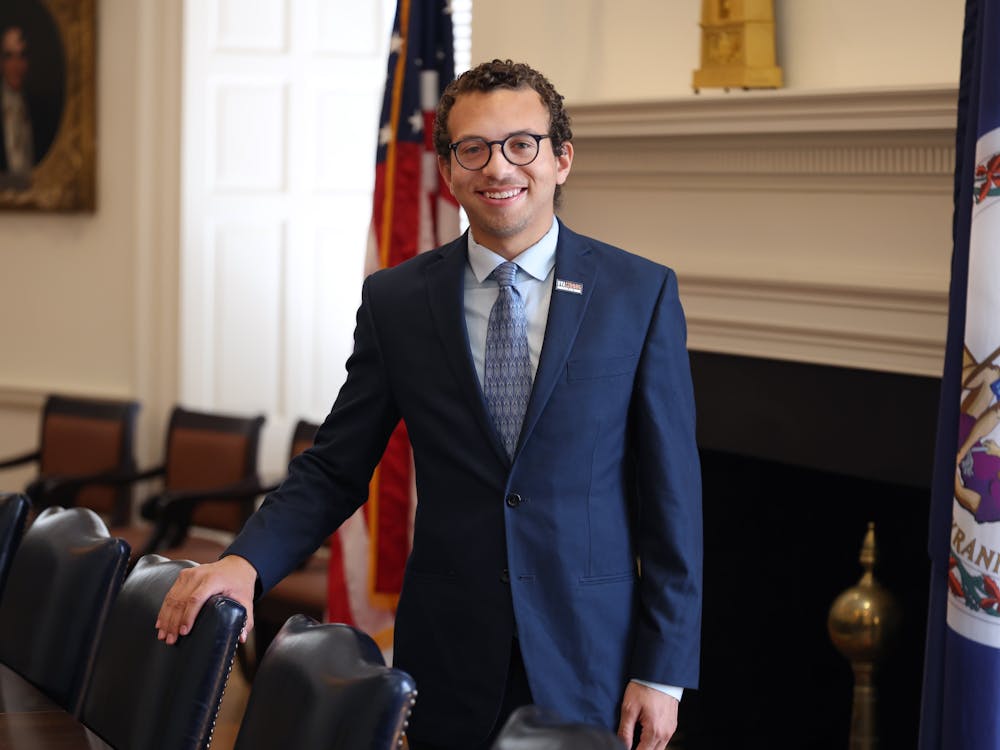The working group tasked to evaluate the University’s response to the Aug. 11 white nationalist torchlit march on the Lawn released a report Monday, which focused on identifying areas where the University’s ability to respond could be improved going forward.
The report claims the University officials’ frame of mind going into the events of Aug. 11 was shaped by a “decades-long history of non-violent protests on Grounds,” which led them to approach the march as being constitutionally protected and accommodated with minimal police intrusion.
“On a number of levels — intelligence evaluation, policy backdrop and police response — this mindset led the University to make judgments that were misaligned to the context and left UPD insufficiently equipped to respond,” the report reads. “As a result, [University Police Department] understood its role as being available to monitor for potential violent disorder by anyone present, amassing backup in the event of such disorder and intervening only in response to such disorder.”
The working group, chaired by Law School Dean Risa Goluboff, concluded the University’s response could have been improved in three main areas: the intelligence received by the University administration, the University’s policies in place to govern protests and demonstrations and the application of existing protocols to a demonstration that did not conform to past patterns.
In the first area of improvement — intelligence received — the report states the University relied on official intelligence from the Virginia Fusion Center without seeking “alternative sources of information as thoroughly as it could have.”
The Virginia Fusion Center is a collaborative effort between state and federal agencies as well as local partners. It was involved in developing a Department of Homeland Security warning, issued three days before the events of Aug. 12.
The report further concludes that information the University did not effectively verify and integrate the information that it did receive from alternate sources. In addition, some information the University acquired about the Aug. 11 march was just not accurate.
UPD had “acted proactively” and placed five “investigatory calls to organizers” of march between 7:42 p.m. and 9:52 p.m. whereupon they learned the marchers planned to gather on Nameless Field, march up University Avenue directly to the Rotunda’s north terrace and gather for 15 minutes. This however, was not the route the white nationalists ultimately took.
They instead started at Nameless Field and walked over to McCormick Road, passing behind Newcomb Hall and Brown College. They then passed the amphitheater and proceeded to the Lawn, ultimately marching to the Jefferson statue north of the Rotunda.
“In the final call between UPD and demonstration organizers, UPD instructed the marchers to ground their drones, questioned the apparent change in the march route and expressed concern that the changed route would mean that torches would be near buildings and trees on Grounds,” the report read. “The marchers ended the call abruptly and proceeded with their march. UPD over-relied on the information the organizers provided, which turned out to be deliberately misleading and ultimately inaccurate.”
In a previous interview with the Cavalier Daily, before this report was released, University President Teresa Sullivan said it was fair to say they were “overly trusting in this case.”
The second area of improvement identified by the working group addressed the University’s insufficient policy protections, criticizing the lack of a formal permitting process and manner policies for the use of common spaces on Grounds.
“The absence of such policies and procedures left the University vulnerable to an unannounced, nighttime march of approximately 300 white supremacists intent upon intimidation,” the report read. “Constitutionally allowable time, place and manner policies could have better ensured the safety of the University community by equipping UPD with the authority to respond to any policy violations.”
This section of the report also addressed University’s “Open Burn and Open Flame Operations” policy which prohibits open flame devices on University property unless approved by the Office of Environmental Health and Safety.
“Though EHS had not approved open flame devices related to the August 11 march, at the time, University policy did not require EHS to notify UPD of approvals,” the report read. “Because of the lack of notification procedures, UPD was not sufficiently aware of its authority to enforce this policy.”
The last section critiqued an inadequate application of existing protocols and stated the protocols in place were “insufficient to address the issues raised by the nighttime presence of a large, highly organized, torch-bearing group intent on intimidation.”
The University should have put more value on the fact that the Lawn serves as both a symbolic center of the University and a home to students and faculty before deciding to refrain from sending an emergency notification to University members, the report read.
The working group then recommended key policy actions moving forward. The first suggestion they listed said the Lawn should be classified as a facility and similar classifications for other spaces across Grounds should be explored.
Secondly, the group recommended strengthening the University's “Open Burn and Open Flame” policy to intensify its enforcement by empowering UPD officers to charge those in violation of the policy with trespassing and ensure open flame approvals are communicated between EHS and UPD. The group requests the Board of Visitors enact the policy as a regulation.
Lastly, the report said the University is considering whether it should adopt “constitutionally permissible time, place and manner regulations, and related approval processes, that would simultaneously facilitate free speech and protect the University community from harm.”
UPD officers will receive additional training in light of what took place Aug. 11.
“UPD will provide additional training of its officers to better equip them to recognize the threshold between speech and violent intimidation and empower them make judgment calls in response to rapidly evolving situations,” the report read.
In addition to the report, the working group also released a detailed timeline of the events which transpired on Aug. 11. The University has also hired Margolis Healy & Associates, a security firm based in Burlington, Vt., to conduct a review of safety and security infrastructure, policies and tools for $250,000.







